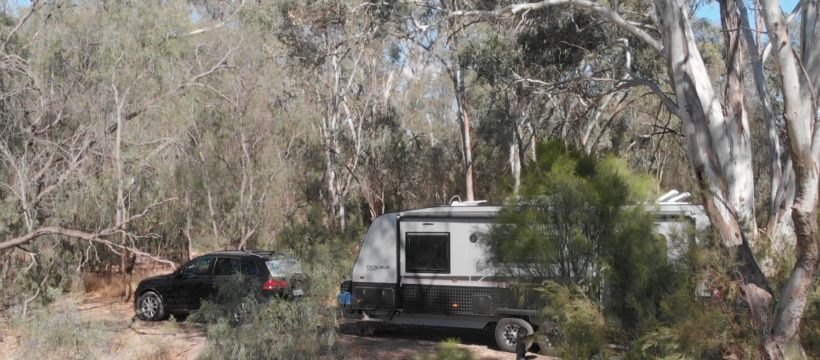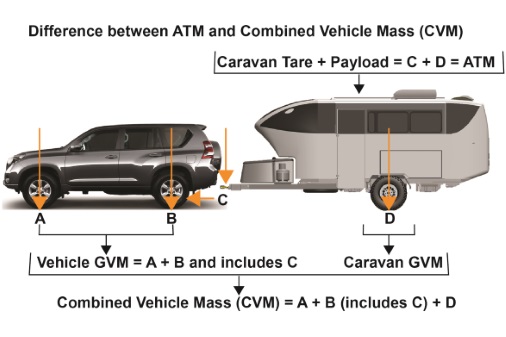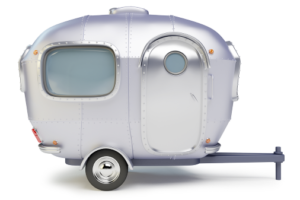Still more decisions. Selecting a tow vehicle.
Of course, if we are going to buy a caravan, we are also going to need a tow vehicle. We can’t use our current car – a 2011 Holden Captiva – as it doesn’t have sufficient towing capacity for our selected van (or any decently sized caravan, really). But even if it did, I wouldn’t trust it.
Note to readers:
Don’t buy a Captiva (unless it’s ours!). But seriously. Don’t do it, or buy ours… we have already laid out thousands to fix the known issues, so you won’t have to. ?
Addendum: The Captiva is sold
Anyway, back to the issue at hand… we need a new car.
This choice has presented us with some interesting issues, some of our own making, We need a 3500 kg towing capacity. Strictly speaking we need 3300 kg towing, but 3500 kg is the value that manufacturers seem to have settled on. That limits our choices to a number of SUVs and and utes. For any non-Australian readers, a “ute” – short for utility vehicle – is what an American might call a pick-up, a single or double row cabin plus a cargo tray. Large, American style “pick-ups”, such as Ford F-series, are relatively rare here, and expensive, so we are mostly talking about the more car-like, or car-size utes. There are of course vehicles with much higher towing capacity, including the aforementioned American pick-ups, but these are generally commercial vehicles, small trucks and the like.
So we began our search online. Thankfully, most car sales sites allow tow capacity as a search criteria, which made the job somewhat simpler.
The Criteria
After some discussion, we came up with the following selection criteria:
- We would like a car less than 10 years old. The newer the better.
- We had a budget of $40k, and that needed to include kitting the car out for towing.
- Diesel was the preferred fuel. Diesel engine characteristics are better suited to towing while remaining frugal around town.
- 5 or 6 cylinders. Although there are some 4 cylinder engines that are suitable for heavy towing, generally they are going to be working too hard, and 8 cylinder vehicles will be overkill when we aren’t towing and more expensive to run.
First Round Eliminations
Eliminating 8 cylinder vehicles was one of the harder choices we made. It eliminated two of Australia’s favourite tow vehicles, the Nissan Patrol (SUV) and Toyota Landcruiser (SUV). The Patrol also has a petrol engine, so was eliminated on two fronts. It is highly capable but fuel costs are high. The ‘cruiser was a much more difficult car to eliminate. Its V8 is diesel, so is more economical than the Patrol, and it is regarded by many as the best tow vehicle (in the non-truck class). However, it is expensive, and it mostly falls foul of our 10 year limit because of this. In fact, very few came up in our searches when both price and age were included, and those that did were very high mileage cars (250,000 km plus).
Finally, we would also prefer an SUV over a ute. However, this was not a hard rule. We will buy a ute if that proves to be the best option.
The Short List
This left us with a small, but sufficient, number of options:
- Audi Q7 (SUV)
- Ford Ranger (ute)
- Holden Colorado (ute)
- Isuzu D-MAX (ute)
- Jeep Grand Cherokee (SUV)
- Land Rover Discovery 4 (SUV)
- Mazda BT-50 (ute)
- Mercedes M Class (SUV)
- Volkswagen Amarok (ute)
- Volkswagen Touareg (SUV)
First, we put all the utes to the back of the list
They all share one potential issue, weights. There are many weights to be considered when towing, but as of this moment all the utes share a 6 tonne GCM (Gross Combined Mass). This is the maximum weight of car and caravan combined, greatly limiting their load carrying capacity. Given the tow ball weight of the caravan is considered part of the car’s payload, this can be problematic. Many, if not all, can have their GVM (Gross Vehicle Mass, the total weight limit of the car alone) upgraded, but this does not always change the GCM.
So on to the SUV’s
First out was the Land Rover Discovery. It is regarded as a highly capable car but it has a reputation for unreliability. A good one would be an excellent tow vehicle, but we couldn’t take the risk. Also, those that did come up in our list were always amongst the oldest cars and were right at the top of our budget.
Next dropped from the list were the Audi Q7 and Mercedes M Class. While not having any reliability questions like the Land Rover, they were also amongst the oldest and most expensive of the vehicles. They could be considered again if necessary, but for now… eliminated.
The Finalists
That left us with the Jeep Grand Cherokee and the Volkswagen Touareg.
We asked several mechanics, including the guy fixing our Captiva transmission, and they all said to stay away from the Jeep. We asked Jeep owners and they were all happy. Hmm? I think what is happening here is that Jeep, in general, is not regarded highly. They have issues. But the Grand Cherokee is the one model that came out of the brief ownership by Mercedes, and it shares a platform with the M Class. It’s gearbox is German and it’s engine is from the Fiat group (not a bad thing in this context). So it isn’t ruled out completely, but we still have one other car to vet.
So we asked the same people about the Touareg. Expensive maintenance was the only negative comment. OK… we have a potential winner.
We then began asking caravan sales people what they thought of the Touareg as a tow vehicle. No one, not one, thought it was a bad idea. Some called it “highly capable” as a tow car, preferable to the Jeep. “More stable” was often heard as well.
Sold? Well, almost.
Final Checks: The Good
Our final check was to compare some of it’s numbers with the Toyota Landcruiser, since that is regarded as the benchmark “tow tug” in the country. Below I selected the newest vehicle of each I could find available on Car Sales for under $40,000 (our maximum budget).
As you can see from the wheelbase and track numbers, the Touareg actually has a (very slightly) longer and wider “footprint”, which bodes well for how planted it feels and how difficult it is for a towed caravan to “wag the dog”. It also has a slightly lower ground clearance and has a lower overall height (not shown), which suggests a lower centre of gravity, also good for resisting caravan movement. Rear overhang, an indicator of how far aft of the rear axle the tow ball sits (also not shown) is also very similar. This distance relates to the potential mechanical advantage the caravan has to force an undesirable direction change on the tow vehicle. The shorter the better.
Final Checks: The questions
However, the Touareg is lighter than the Landcruiser, which counts against it when towing a heavy caravan.
The next most common tow vehicles for heavy caravans are the Jeep Grand Cherokee and utes. The Jeep has a smaller footprint than the Touareg and a GVM only 100 kg more.
The utes are misleading. They typically have a higher GVM than the Touareg, but their GCM means they cannot be loaded to that limit. For instance, a 3,500 kg van being towed by a Ford Ranger would limit its GVM to 2,500 kg (6,000 – 3,500), down from the 3,200 kg listed in the specifications, and a loss of 700 kg of payload out of a little over 1,000 kg total. Take off the towball weight of a big van (200 kg plus) and you can have a driver and no passenger (or fuel!). The revised GVM is 300kg less than the Touareg too. This is why ute owners often upgrade the suspension for heavy towing.
The Touareg
On the other hand, a 3,500 kg caravan being towed by the Touareg leaves its 2,840 kg GVM and 681 kg payload (less towball weight) untouched due to the 6,340 kg GCM.
Additionally, for the price, we can source a Touareg with self-levelling air suspension. And for those unfamiliar with this car – most people it seems – it shares its main structure and many mechanical components with the Audi Q7 and the Porsche Cayenne. In more recent years that has also extended to the Lamborghini and Bentley marques as well. It is the cheapest of all these but has the best off-road performance as well. Something of a bargain really.
Since this is a Volkswagen, there is the whole “dieselgate” fiasco to consider, but we are looking at second hand cars and so that damage is already done. Whatever car we choose already exists and is out there running whether we buy it or not. Had we been in the market for a new car this may have been part of the decision process, but we’d also be looking at the better part of $80,000 for a model with the air suspension.
Touareg it is.





 More decisions. Choosing a caravan.
More decisions. Choosing a caravan.  Growing impatient
Growing impatient 




